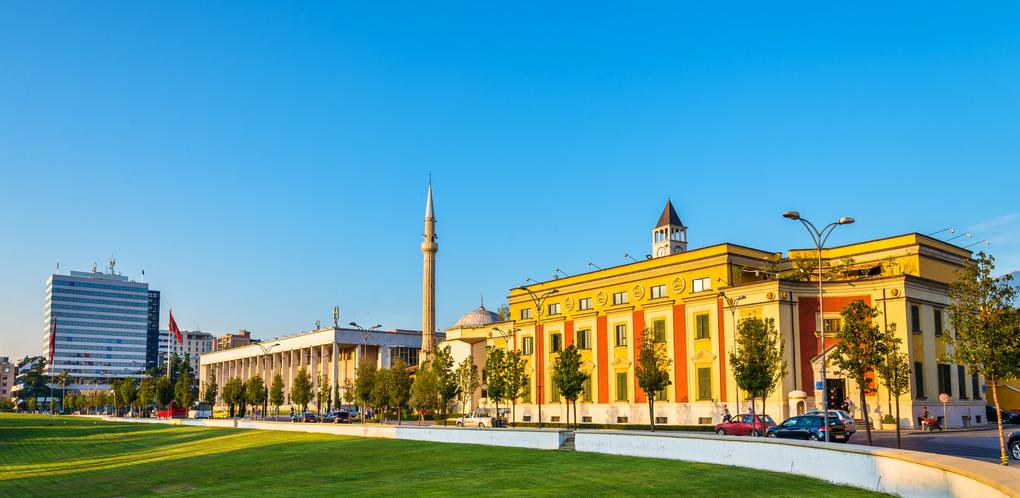
Albania travel guide
Albania Tourism | Albania Guide
You're Going to Love Albania
Having long been a bit of an enigma, Albania is home to beaches and mountains, fortress towns as well as ancient Roman and Greek ruins.

What to do in Albania
1. Explore Tirana
The capital of Albania has really come alive in the last couple of decades. It offers a lot to see, such as Petrela Castle and Bunk'Art, an old bunker converted into a museum.
2. Hike Around the Accursed Mountains
Also known as the Albanian Alps, impressive scenery and a variety of hiking trails await in this mountain range, which is located in the very north of the country.
3. See the Ottoman Houses at Berat
The Ottomans left their mark on Albania: interesting sites to visit include Gjirokastra and the Ottoman quarter in Berat, which is lined with houses on a hill leading to the castle.
4. Marvel at the Butrint Ruins
This is one of the most ancient sites in the country, with Greek ruins dating back to the 6th century BC, and Roman ruins from around 160 BC.
5. Swim in the Albanian Riviera
Albanian beaches are still relatively pristine, but as visitors discover this little treasure around the Mediterranean, the Riviera is expected to become busier in years to come.
When to visit Albania
The summer season tends to be extremely hot in Albania, so the best times to visit the country are the months of April to June and September to October, as they present mild and warm weather and are outside the peak tourist season.
How to Get to Albania
Entry requirements
Citizens of the USA can enter Albania without a visa for up to 1 year, and citizens of around 40 other countries can enter without a visa for up to 90 days, including European citizens. For citizens of any other countries, a visa is required.
Plane
The main international airport in Albania is the Mother Theresa International Airport. The national airline Air Albania flies to a handful of destinations. A large number of airlines connect the country to European destinations, such as Alitalia, British Airways and Lufthansa.
Car
Car travel into Albania is possible from all its neighboring countries, with the main roads going through Podgorica in Montenegro, Thessaloniki and Ioannina in Greece, Ohrid in North Macedonia, and Prizren in Kosovo.
Bus
Coach buses travel to Tirana from Istanbul in Turkey, Athens in Greece, Sofia in Bulgaria, Tetovo in North Macedonia and Prishtina in Kosovo. Buses can also transport passengers to Korca from Istanbul in Turkey, Ohrid in North Maccedonia, as well as Thessaloniki, Ahtens and Larisa in Greece.
Boat
Ferries connect Albania to Bari, Brindisi and Ancona in Italy through various companies, including Skenderberg Lines and European Seaways. A connection is also available with Corfu in Greece on a daily basis.
Popular airports in Albania
Popular airlines serving Albania
Where to stay in Albania
Hotels are readily available around the main cities and touristic sites, but another option for accommodation are guesthouses that are available in the northern part of the country and offer the possibility to experience local hospitality and traditions at their best.
Where to stay in popular areas of Albania
Most booked hotels in Albania
How to Get Around Albania
Public Transportation
Both buses and train networks are available in Albania. Buses travel all around the country and trains connect major cities and towns outside of the capital.
Trains
The rail network in Albania travels to and from a limited number of cities, which include Durres, Fier and Vlore. It provides for some very scenic travel, such as the train line going to and from Lezhe and Shkoder.
Bus
Buses are the most-used form of public transport, especially minibuses, called Furgons, which go to all the big cities and some smaller towns. If unable to find a Furgon station, ask a local as they do not have a fixed timetable.
Car
Driving is a great way to see the rural and mountain areas of Albania. Car rental companies are mainly available in Tirana and at the airport. Those with a non-EU and non-English driver's license will need to get an International Driver's Permit.
The Cost of Living in Albania
The average cost of an inexpensive meal in Albania is around 500 ALL (4.50 USD), while a midrange meal will cost around 1500 ALL (13.50 USD) per person, and a local bus ride will cost around 40 ALL (0.35 USD). Credit and debit cards are widely accepted throughout all major hotels, restaurants and establishments.